Diamond Prices Calculator & Simulator
- Diamond prices calculator
- How is the price of diamonds calculated?
- What other criteria can affect the value of a diamond?
- How much can I sell my diamond for?
- Where can I sell my diamond?
- What is the price of colored diamonds?
- Price of a natural diamond versus a synthetic diamond
With the forms below, you can have a realistic estimate of the diamond price. You must simply select a shape, a weight, a color and a clarity.
We will give you the selling price of a loose diamond in retail trade (jewelry). This is not the resale or buyback price of a second-hand diamond.
Prices are only indicative, there could be considerable differences in price between those posted on our site and those posted in a jeweller's trade.
If you would like to know the buyback or resale price of a diamond (e.g. if you are selling an engagement ring or solitaire ring), this is available by paid subscription. Please subscribe to our diamond buyback value simulator.
Free limited access (maximum 3 searches). Subscription and fee required for unlimited access.
Diamond prices calculator
How is the price of diamonds calculated?
The price is always calculated according to the "4Cs" (the 4 criteria used to grade a diamond) which stand for Cut, Carat, Color and Clarity.
These 4 criteria are needed in order to be able to calculate the price of a diamond.
Lots of people contact us to ask us how much their diamond is worth. Sometimes it's a family diamond bought several decades ago, a diamond bought as in investment in the 1970s and 1980s or a piece of jewelry set with a diamond.
Very often these diamonds do not have a diamond grading report, or, if they do, it tends to be very old. If the diamond does not have a report, it will be very difficult to accurately value it, as while is easy to visually determine its cut (round brilliant, oval, pear, etc.) and to weigh it (using carat scales), the other two criteria (color and clarity) are much more subjective as they are measured by the human eye.
If you were to take this diamond to several jewelry stores or diamond merchants to have it valued, it is very likely that you would get different value estimations, simply because the professionals would not agree on the color and clarity grade of your stone. There only has to be a difference in the color grade and/or clarity grade for there to be a difference in the price estimate of around 10 to 20%.
That is why it is so important to have a grading report that indicates the characteristics of the diamond: this serves as the diamond's identity card. All of the information is clearly recorded on this gemological certificate and the information on it indisputable (if, and only if, this certificate was issued by one of the three most trusted independent laboratories in the world, namely the GIA, HRD or IGI).
Let's now look at these famous "4Cs" in more detail:
The cut of the diamond
The first of the "4Cs" is the "cut" of a diamond which refers to both its cut shape and its cut quality. Indeed, in order to calculate the price of a diamond, we need to know its cut shape: is it round brilliant, emerald, princess, etc. ? This criteria is easy to determine as you only need to look at a diamond in order to identify the shape of the stone's cut. While it is easy to determine the cut shape of a diamond, it is not so easy to determine if this diamond has the right dimensions, is well-proportioned: if it has a good cut quality. Certain devices are needed to assess this cut quality and to determine whether or not the stone has good proportions.
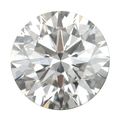
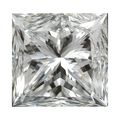


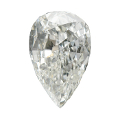
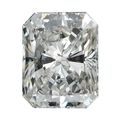
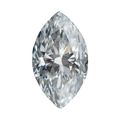
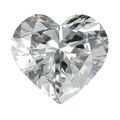
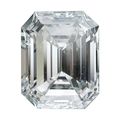

It should be noted that the price of a round brilliant diamond will be higher than other diamond cuts. Indeed, the round brilliant cut is the most popular shape of diamond, with the other shapes, known as "fancy cut" diamonds, much less sought-after. As the diamond market is based on supply and demand, it follows that the value of a brilliant diamond is higher than the other shapes.
The carat weight

The second of the "4Cs" is the carat weight of the diamond which is expressed in carats: 1 carat = 0.20 gram.
Carat scales are used to weigh the diamond but they can also be used to weigh precious stones and gemstones. These scales must be sufficiently accurate, to at least one tenth of a carat.
The weight of the stone has a direct effect on its value, the greater it is, the higher its value.
The value of a 1 carat diamond will not be twice that of a 0.50 carat diamond as price is not proportional to weight. Diamond merchants use the Rapaport price list to calculate the price of diamonds. This list is divided into different price grids according to the carat of the diamond, for example there is a price list for 0.40 to 0.49 carat and another one for 0.50 to 0.59 carat. The carat price increases with every change of grid.
The price is always calculated according to the carat weight of the stone. For example, a 0.65 carat G VS2 brilliant cut diamond will have a slightly higher value than a 0.63 carat G VS2 brilliant cut diamond. But watch out for a change of grid - for example, the price of a 0.99 carat D VVS2 round cut diamond is not the same as that of a 1 carat D VVS2 round cut diamond, as these two weights are not in the same grid. The prices per carat will therefore not be equal and the difference in value between these 2 stones will be much greater than if we compared the value of a 0.98 carat D VVS2 and a 0.99 carat D VVS2 (they also have a difference of one hundredth of a carat but their carat weight falls within the same price grid).
The caret used to weight gemstones has nothing to do with the carat used in the jewelry industry.
Our price simulator above will help you understand the price of this precious stone for weights between 0.20 and 5.99 carats.
The color of the diamond
The third of the "4Cs" is the color and/or hue of the diamond.
The color has a great effect on the value of diamonds and diamond experts have created a color grade scale starting at the letter D right through to the letter Z. Therefore, the further down the scale you go, the lower the value of the diamond.
The best color, or highest grade, is therefore the letter "D" ("D" for "D"iamond). A D-color diamond is absolutely colorless, whereas a Z-color diamond will have a yellow hue that is very visible to the human eye. Therefore, the further down the scale you go, the more of a yellow hue the diamond will have.

Gemmology laboratories use master stones to compare and determine the color grade of the diamonds they are analyzing. The color of these stones has been calibrated and you simply place one of these calibrated stones next to the stone being tested to determine the color grade of the diamond being analyzed. If the 2 stones do not have the same hue, the stone is changed for another one until the 2 stones have exactly the same hue.
This criteria is therefore fairly subjective as a diamond expert's eye determines the color grade of the diamond they are analyzing and if they are tired or distracted they could make a mistake. Not to mention convenience laboratories that may record fancy colors on their diamond report to please a "friend" who has given them their diamond to analyze. That is why diamond experts only recommend 3 gemological laboratories, namely: the GIA, HRD or IGI).
If you look at the difference in price between 2 identical diamonds that have been given a different color grade, it is easy to understand the economic interests at stake. Let's take a 1 carat round brilliant diamond graded color D and clarity IF and compare its value to a 1 carat round brilliant diamond graded color E and clarity IF: the price difference between these 2 diamonds will be -25.94%, which is very significant for 2 diamonds of the same carat and clarity. There is only one color grade between these 2 stones and yet their value is completely different. Furthermore, this difference in color between a D and an E is invisible to the human eye and you need master (comparison) stones in order to be able to see this slight variation in tone.
Let's take another example: a 1 carat, round brilliant diamond graded color D and clarity IF and compare its value to a 1 carat, round brilliant diamond graded color H and clarity IF: the price difference between these 2 diamonds will be -59.43%, which is even greater than our previous example. Its value is almost half even though the carat and clarity are identical.
The clarity of the diamond
The last of the "4Cs" is the clarity grade of the diamond for which, as with color, diamond experts have created a clarity scale against which they can grade the diamonds.
A magnifying glass with 10 times magnification (10x lens) is used in order to see the inclusions (natural blemishes) present in the diamond. An expert certified in gemmology looks at the diamond under the 10x magnifying glass in order to count and position the inclusions present in the diamond. The more inclusions a diamond has, the lower its value. The most ought-after diamonds are those whose inclusions cannot be seen at ten times magnification: these are Flawless (FL) and Internally Flawless (IF) diamonds. Conversely, P1, P2 and P3 diamonds are the least valued as their inclusions are visible to the human eye.
Now let's compare the price of two diamonds of identical cut, carat and color but with different clarity grades. Let's take a 1.50 carat princess diamond graded color D and clarity IF and compare its value to a 1.50 carat princess diamond graded color D and clarity VVS1: the price difference between these 2 diamonds will be -6.82%, which is not insignificant. If we put these 2 diamonds alongside each other you would not be able to see the difference in clarity grade and yet their value is not the same.
Let's take one last example and compare a 1.50 carat princess diamond graded color D and clarity VVS1 with a 1.50 carat princess diamond graded color D and clarity VS2: the price difference will be -33.52%.
What other criteria can affect the value of a diamond?
We have just seen above the 4 diamond valuation criteria (the "4Cs") and it is important to understand all of them in order to be able to accurately calculate the price of diamonds. If one of them was missing, we would not be able to calculate its price.
Other criteria that can affect price are:
- The cut grade: a perfectly cut diamond will obviously have a higher value than a poorly-cut diamond. This cut quality can lead to variations in price of around 5 to 15%. If the diamond is very poorly cut, it would need to be recut to make it easier to sell and that will inevitably be accompanied by a reduction in weight. It therefore follows that a poorly-cut diamond does not have the same value as a very well cut diamond (of equal weight, color and clarity). Gemological laboratories state the cut quality on their certificate for round brilliant diamonds but not for the other shapes (princess, oval, heart, etc.).
- The polish and symmetry: a diamond that does not a have good polish or symmetry grade will see its value fall by 5 to 10%. If a diamond has a poor polish, it will need to be polished again to bring out the shine and this will inevitably lead to a reduction in its weight. It therefore makes sense that the value of this type of diamond is lower.
- Fluorescence: can only be seen under an ultra-violet light. If a diamond has fluorescence and if it is exposed to this ultra-violet light, it will emit a blue glow, and if it has no fluorescence, it will not glow. Strong or very strong fluorescence will devalue diamonds with a color grade between D and H. For example, a 1 carat, brilliant cut diamond with color grade D, clarity grade VVS2 and very strong fluorescence will see its value fall by between 15 and 25% compared to the same diamond with no fluorescence. This is mainly explained by the fact that a diamond with very strong fluorescence may appear slightly milky and also because people wanting to purchase a D VVS2 diamond (which is an excellent quality diamond) do not want their diamond to have any fluorescence. This is a market where prices are dictated by supply and demand.
- The diamond grading report: a diamond that does not have a diamond grading report, or that has a report issued by a laboratory that is not recognized by diamond experts, will see its value fall compared with the same diamond certified by the GIA, HRD or IGI (which are the best laboratories in the world, recognized by our profession). As we have explained above, the color and clarity criteria are determined by the eye of an expert but they may be tired or distracted when they are analyzing the diamond and the color grade and clarity grade that they indicate on the report may not correspond to reality. The 3 gemological laboratories that we recommend have established very strict evaluation standards that ensure the impartiality of the stone's analysis and of the final result.
- Other criteria, such as an extremely thick girdle or a very large cutlet can affect the value of a diamond. This denotes a poorly-cut stone and, naturally, it's value will decrease slightly.
How much can I sell my diamond for?
This is question we are frequently asked.
I inherited a diamond, I bought a diamond as an investment, I wish to sell the diamond in my engagement ring: where can I sell it for the best price?
If you have not yet read the information and explanations above, we advise you to read them first as they will provide many of the answers to your questions.
If you own a family diamond of more than one carat that does not have a grading report (or has an old report), and if this diamond has a modern cut (57 facets), we recommend having it certified by one of the recognized gemological laboratories (GIA, HRD or IGI). This will cost you a few hundred dollars but it will be worth it as once you have this certification report, you will know exactly what kind of diamond you own and will be able to accurately determine its resale value. Without a grading report, it will be very difficult to determine the "4Cs" of your stone, especially the color grade and clarity grade which are the two most subjective criteria. Some buyers will tell you your diamond is color G and others color H, etc. Who do you believe? Without a certificate proving the grading of your diamond, it will be difficult to objectively talk about its characteristics. The seller wants to sell their diamond at the highest possible price, but the buyer wants to but it at the lowest possible price! If you don't know precisely what you are selling, it will be impossible to promote the unique characteristics of your stone and it is safe to say that you will not get a fair price for it.
Once you are in possession of the grading report, you can then use our price simulator to calculate the resale value of your diamond.
Where can I sell my diamond?
This question comes up frequently immediately after this one: what price can I resell it for?
Below, you will find the different options available to you for selling your diamond.
I need to sell it quickly:
- resale to a diamantaire: they will buy back your diamond for the price at which they could buy this same diamond on the international market. Generally, the buyback prices offered today are 40% to 70% below the Rapaport price. The buyback price is therefore very low.
- resale to a jeweler: you can contact these professionals and see if one of them might be interested in buying your stone. The buyback prices offered are fairly low.
I am not in a hurry to sell it:
- resale via auction: you can your local contact auction houses and ask them how much your diamond could sell for at auction. If you are happy with the starting price, you can consign the sale to them. Typically, the prices offered are fairly low as their aim is to sell as many lots as possible.
- resale via a secondhand store: you can contact jewelry stores that offer secondhand jewelry and ask them if they would be interested in offering your piece of jewellery for sale in their store. The buyback price tends to much better than the options described above as you can negotiate the sales commission directly with the jewelry store and it is therefore in their interest to sell it for the highest possible price. The time it takes to sell your diamond will depend on the characteristics of your diamond: a 1 carat G VS2 round brilliant diamond will sell much more easily and quickly than a 2.50 carat E I1 marquise cut diamond. This is a good way to sell your stone.
- resale to private individuals: you can advertize your diamond for sale on specialist sites. It is important not to be too hasty. It is you who determines the sale price. This is one of the best ways to get the best possible price for your diamond.
- resale on our website: we can sell your loose diamond for you on our online diamond exchange. Our customers can use this online diamond selling service free of charge if they originally bought their diamond from us. You set the selling price yourself.
In summary: if you want to sell your diamond quickly, the buyback price of your diamond will not be very high. Conversely, if you are not in a rush, you will get a better price for it.
What is the price of colored diamonds?
Different criteria are used to calculate the value of a colored diamond from those used to calculate the value of a colorless diamond. Indeed, the price of a colored diamond will be first and foremost determined by its color and the intensity of its color.
For example, a 1 carat Fancy Vivid Pink diamond (very intense pink color) will have a much higher value than a 1 carat Fancy Yellow (pale yellow color) diamond. The first valuation criteria for colored diamonds is therefore the type of color and the intensity of this color. A 0.95 carat Fancy Purplish Red (very intense red) round brilliant diamond was sold for $880,000.00 compared with the price of a 1 carat round brilliant diamond of the highest quality (D FL) which was only $17,000.00.
The cut shape, clarity grade, cut quality, polish, symmetry and fluorescence do not affect the value of this type of diamond to the same extent.
Price of a natural diamond versus a synthetic diamond
Reminder: a "synthetic diamond" is a diamond that is created in a laboratory, a cultured diamond, a diamond created by man.
There are several techniques for "growing" diamonds in a controlled chamber:
- The CVD technique (Chemical Vapor Deposition): the diamond is "grown" in successive layers in a chamber subjected to very high pressure (one-tenth atmosphere) into which diamond particles have been placed.
- the HPHT (Hight Pressure and High Temperature) technique: a mixture of carbon and transition metals are placed in a chamber which is subjected to very high pressure and very high temperatures that reproduce the conditions under which diamonds form naturally in the mantle under the earth's crust.
Diamonds produced via the CVD method are often of very good quality (good color and very good clarity) and have the same gemological characteristics as natural diamonds making them difficult to recognize. That is why, when buying a diamond online, it is important to ensure that it is certified by one of the recognized gemological laboratories (GIA, HRD or IGI), otherwise ill-intentioned people could sell you a synthetic diamond claiming it is a natural diamond.
With the emergence of synthetic diamonds in the diamond industry, companies sell synthetic diamonds at prices that are around 20 to 50% lower than natural diamonds.
The value of synthetic diamonds is therefore much lower than the value of natural diamonds, which makes perfect sense as synthetic diamonds can be reproduced over and over again in the space of just a few weeks, whereas it takes billion years to create just one natural diamond.
The price of a diamond is determined by its rarity! It is likely that the value of synthetic diamonds will decrease over the next few years as growing chambers become less and less expensive and production costs fall, thereby lowering the selling price of synthetic diamonds. We have already seen this happen with synthetic colored stones (rubies, sapphires, etc.) which are now worth almost nothing.
Finally, concerning synthetic diamonds, one of the commercial arguments put forward by sellers of these stones is the "ethical" aspect: they are man-made so we know their origin and, more importantly, that they do not come from conflict zones and are not "war diamonds" or "blood diamonds". Admittedly synthetic diamonds are fully traceable, but what about their carbon footprint? Creating a synthetic diamond is a very energy intensive process. The growing chambers consume a lot of electricity and carbon, other metals and/or diamond seeds are required to produce this synthetic diamond. The natural diamond industry has set up traceability systems for rough diamonds and big mining companies guarantee their customers the origin of the diamonds they are buying. As for us, we guarantee on our invoices that the diamonds invoiced have been purchased from legitimate sources not involved in the funding of conflicts and in compliance with UN resolutions. We guarantee that these diamonds are from conflict free areas: they are natural diamonds of 100% ethical origin.
